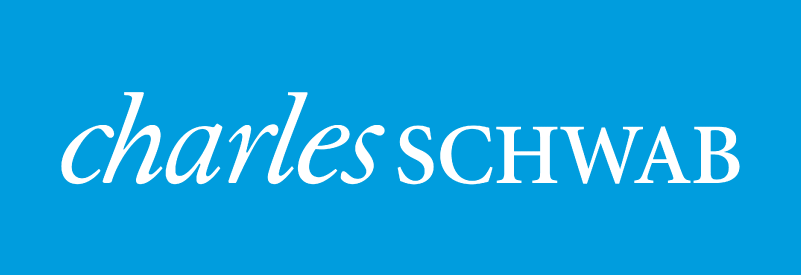A global trend of reopening economies, improving virus data, and massive stimulus bolstered the view that the bottoming of economic data is behind us which, after the best April (+12.82%) for the S&P 500 since 1987, delivered the best May (+4.76%) since 2009 – the best back to back monthly results since exiting the GFC. Cyclicals joined in the recovery in the latter half of May with industrials (+5.5%) and materials (+7%) posting strong gains. European and Latin American led equities globally while tense U.S.-Sino relations pressured Chinese and Hong Kong markets. Rates didn’t move very much during May, as bond markets priced in lower inflation for longer and persistent low policy rates from the Fed. Commodity markets staged a huge rally on the back of an 87% move in WTI oil and solid returns across most industrial metals while the USD held true to its counter-cyclical nature, falling 0.68% for the month.
Market Anecdotes
- CoVid-19 data (U.S.) continued to improve through May with positive test rates declining from a peak of 21% to 5.4% by month’s end. Seven-day averages of deaths per day, new cases per day, and hospitalizations all show definitive signs of improvement.
- Since the CoVid-19 genome was publicly released on January 7th, the global Manhattan Project style race to find a vaccine has yielded 8 therapies already in human trial stages, the fastest therapeutic technology development in history.
- NBER declared an obvious end to the longest expansion in U.S. history at 10 years 8 months, officially entering recession in March. While recessions last an average of 15 months, it is notable that the 1918 Spanish Flu recession was the second shortest on record at 7 months.
- The Fed balance sheet topped $7t for the first time in May, up over $3t in the past three months. Money supply (M2) has grown 31.3% over 13 weeks. The Fed’s $250b SMCC program, managed by Blackrock, began trading in late May, purchasing individual bonds and fixed income ETFs across investment grade and high yield markets.
- Markets have also benefited dramatically from nearly $3t in U.S. fiscal stimulus spanning unemployment benefits, direct payments to individuals, loans for companies, state/local government Covid-19 support, and public services.
- State budget shortfalls are expected to reach $765b over the next 3 years, far greater than the $510b shortfall of 2009-20011 and the IMF expects budget advanced economy budget deficits to exceed 10% of GDP in 2020, also significantly higher than the GFC.
- There were 12 global central bank rate moves during the month of May, all of which were rate reductions ranging from 25bps to 100bps. May also saw the EU announce a €750b ($823b) stimulus package of loans ($500b) and grants ($250b) and the EC promoting a support plan for the region’s weaker nations, much to the chagrin of the ‘frugal four’.
- Resilience of the U.S. housing market was evident during the month, helped materially by very supportive technicals and the 30-year mortgage rate hitting a new all-time low of 3.15%.
- Oil markets rallied over 85% in May after posting the worst YTD return on record through month end April (-74%). Improved outlooks on CoVid-19 related demand destruction, production cuts (in addition to the April cuts) of 1.2mbpd from KSA/Gulf allies, and a KSA/Russia agreement to extend production cuts through July all factored strongly into the rally.
- May capped off three straight months of record corporate bond issuance and significant U.S. Treasury issuance of $4.5t to fund the fiscal year 2020 deficits. There are more than enough bonds to go around.
Economic Release Highlights
- May’s jobs report reflected a surprise 2.5mm increase in payrolls and a 13.3% unemployment rate after April posted the worst single month in history (20.5mm jobs lost).
- May’s PCE report showed consumer spending dropping by a record 13.6% in April, missing the -12.9% consensus and followed up a 7% drop in March.
- Personal income unexpectedly jumped by a record 10.5% (consensus -5.0%) thanks to an unprecedented 160.4% surge in government transfer receipts (unemployment insurance +1.93% and stimulus checks 13.9%).
- Inflation was non-existent as expected with MoM headline and core PCE Price Index dropping 0.5% and 0.4% respectively, the most since 9/11. YoY headline and core PCE prices eased to 0.5% and 1.0%, the lowest levels since December 2015
- Economic damage beginning in March took Q1 GDP to -5.0% while Q2 forecast from the Atlanta Fed GDPNow estimate is at -48.5%, all but certain to register as the worst GDP quarter in U.S. history by a landslide.
- May’s PMI (39.8) and ISM (43.1) manufacturing indices improved slightly from April levels but remain deep in contractionary territory.
- May’s ISM services index rose MoM (41.8 to 45.4), still contractionary territory but tied for the largest MoM increase since September 2017.
- May’s PMI readings for the Eurozone and Japan were 39.5 and 38.4 (manufacturing) and 28.7 and 23.5 (services) both deeper red numbers than the U.S. but beginning to improve as well.
- May’s NAHB Housing Market Indicator confirmed a relatively healthy housing market backdrop, climbing from 30 to 37, the seventh largest monthly increase since 1985. Housing supply was lowest in 7 years prior to the pandemic followed by -50% drop in April and -30% in May.
- April’s new home sales registered 623k, well over the consensus estimate of 495k and a very surprising number during a month of record economic declines.
- The May NFIB small business optimism index surprised on the upside, registering 94.4 versus consensus expectation of 92.0.
- After plummeting 30 points in April to 85.7, May’s Conference Board consumer confidence reading edged slightly higher to 86.6.
- UofM consumer sentiment reading for May softened from the preliminary reading to 72.3, down 27.7% from one year ago and the lowest level since October 2008.




Leave a Reply